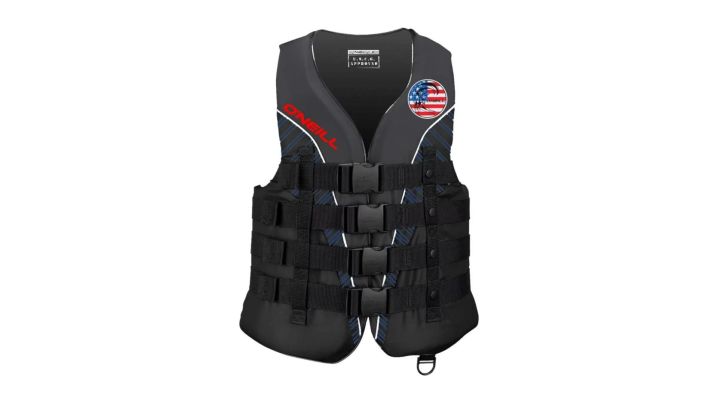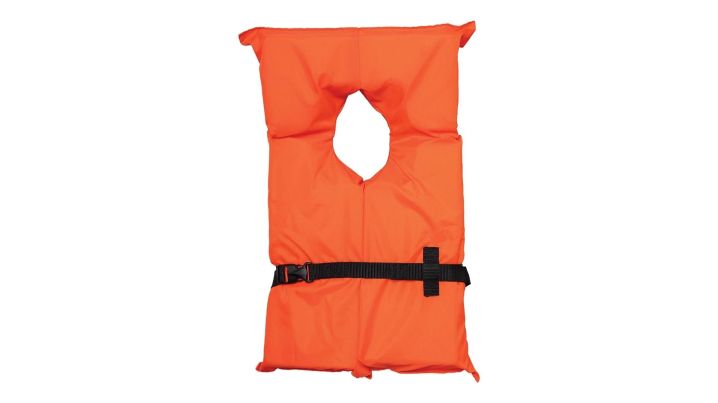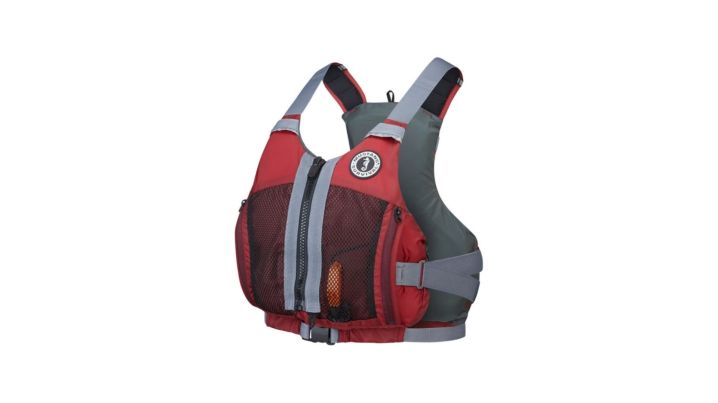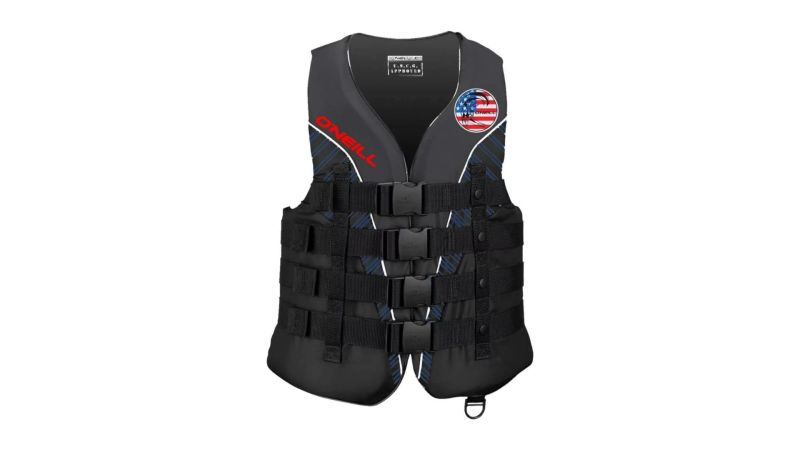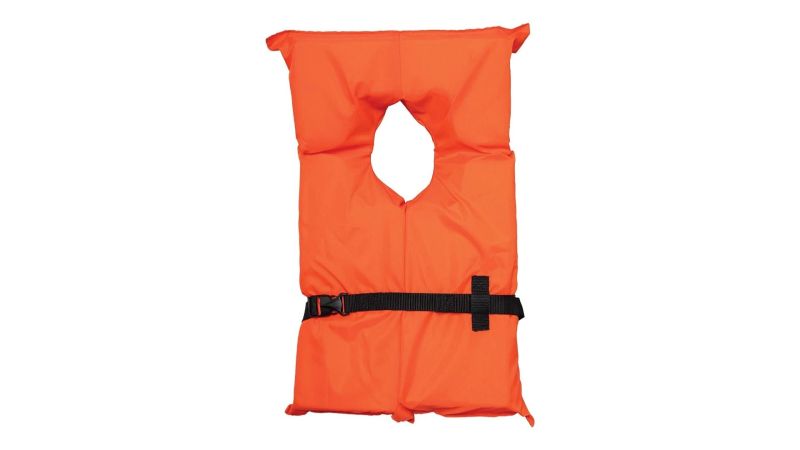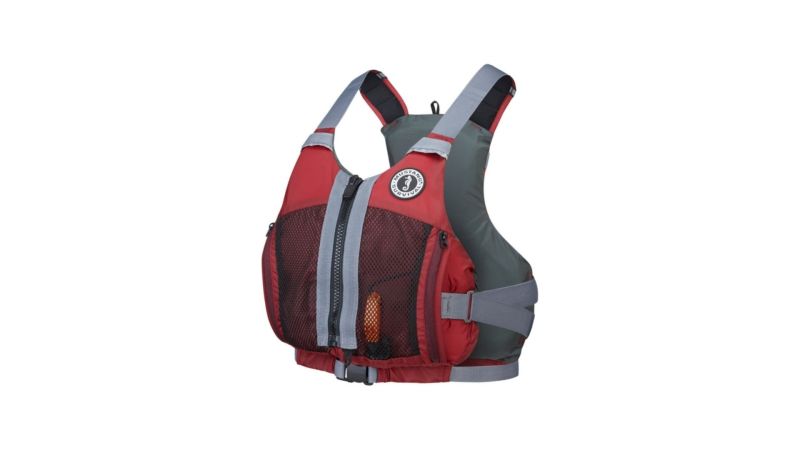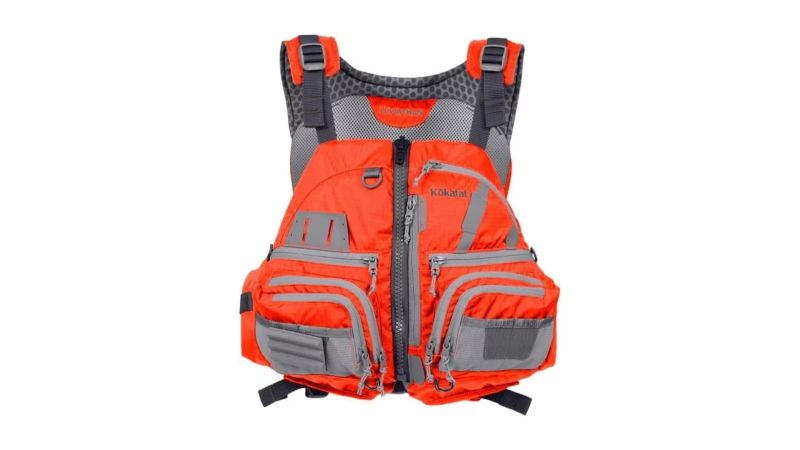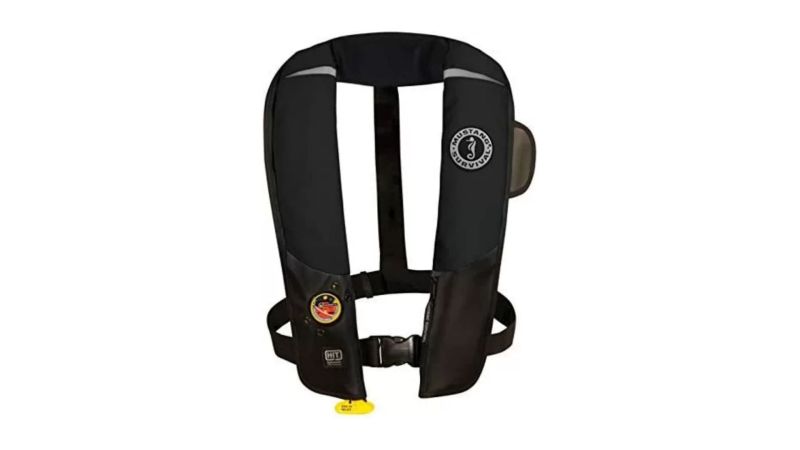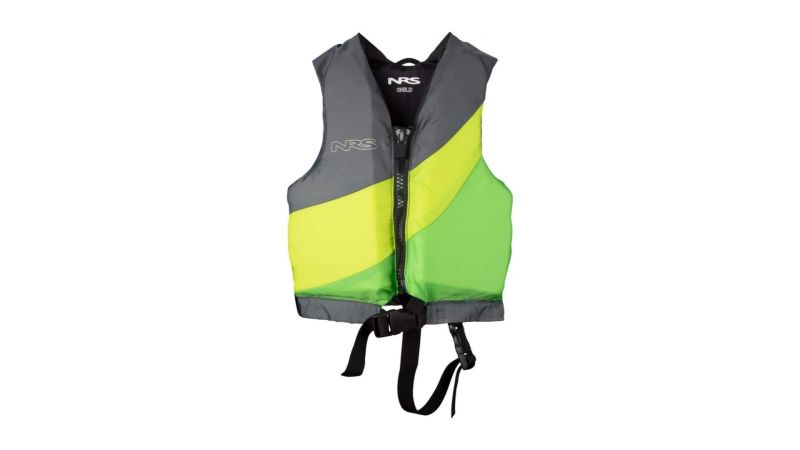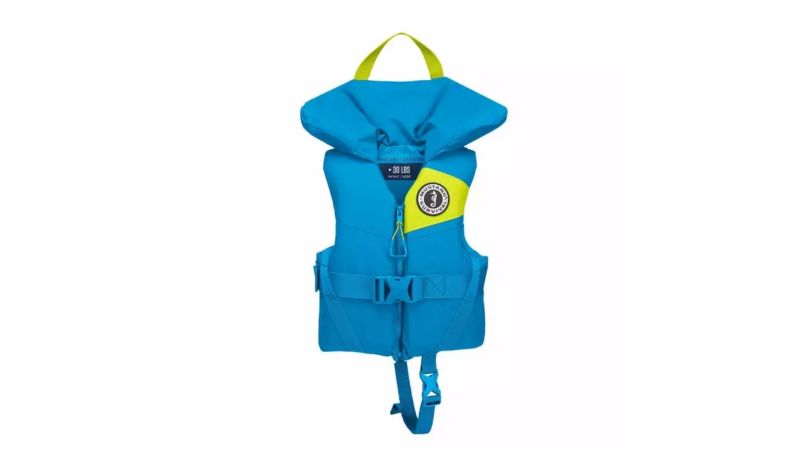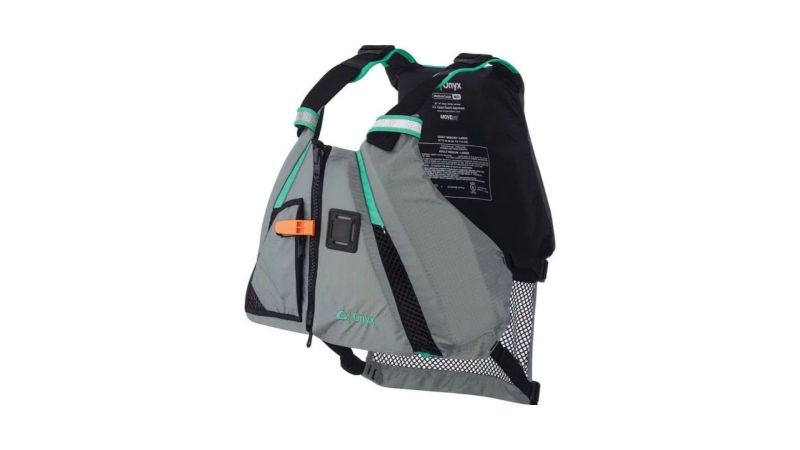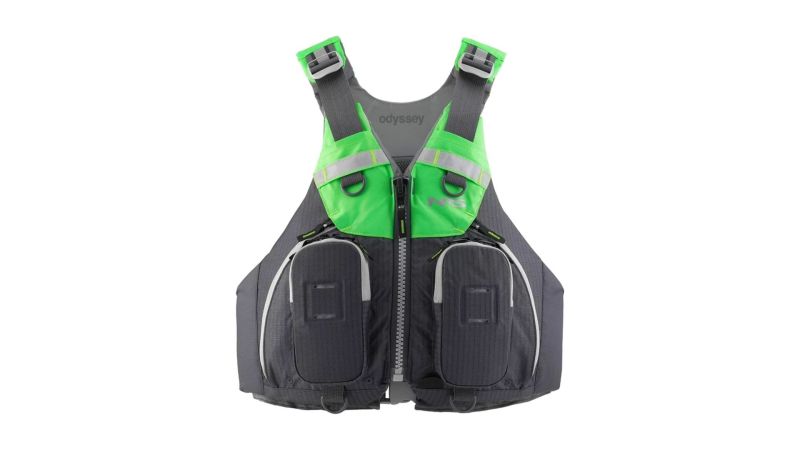We may earn revenue from the products available on this page and participate in affiliate programs.
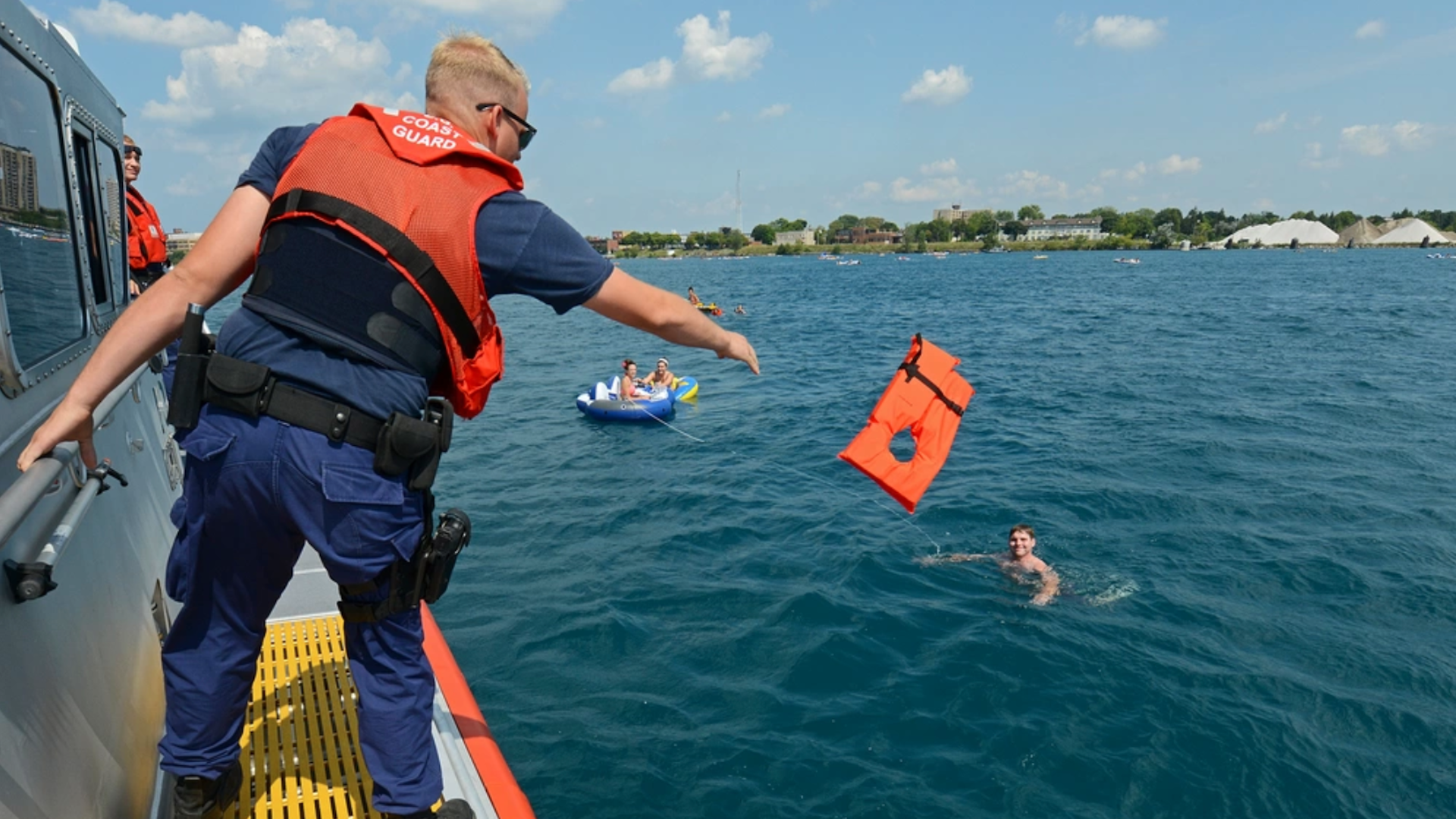
Life jackets, or personal flotation devices, used to be bulky, ugly, and fatiguing to wear. Now they’re fashionable, high-performance, and better than ever — and with more people choosing to beat the heat out on the water, they’re also more necessary than ever before.
I spent four years as an active-duty Coast Guard small boat crewman, so suffice it to say, I know a little more than the average bear about what makes for a quality life-saving product and what will turn a potentially deadly accident into just another fun story to tell at parties. With that knowledge and experience in mind, here’s your guide to the best life jackets worth wearing.
- Best Overall: O’Neill Superlite
- Best Budget: Airhead Universal Type II
- Best for Women: Mustang Destiny
- Best for Fishing: Kokatat Leviathan
- Best Inflatable: Mustang HIT
- Best for Kids: NRS Crew Child
- Best for Infants and Toddlers: Mustang Lil’ Legends Infant
- Best for Paddleboarding: Onyx MoveVent Dynamic
- Best for Kayaking: NRS Odyssey
Best Overall
O’Neill Superlite
Best Budget
Airhead Universal Type II
Best for Women
Mustang Destiny
Best for Fishing
Kokatat Leviathan
Best Inflatable
Mustang HIT
Best for Kids
NRS Crew Child
Best for Infants and Toddlers
Mustang Infant Lil’ Legends
Best for Paddleboarding
Onyx MoveVent Dynamic
Best for Kayaking
NRS Odyssey
Things to consider before buying a life jacket
Purpose
Besides just keeping your head above water, life jackets can have a lot of specialized features. Consider what waterborne activity you’ll be doing the most and see if just a general Type III PFD works or if you might need something more purpose-built. For example, sea kayaking and whitewater kayaking have very different aspects and are best served by different types of PFDs.
Comfort
An uncomfortable life jacket doesn’t get used nearly as much as the one you forget you’re even wearing. And with a lifesaving device, you never know when you’re going to need that PFD. A comfortable PFD will also make for a more enjoyable experience on the water overall, which is the whole point of recreational aquatics in the first place, isn’t it?
Longevity
One of the main drivers of the price will be how often a PFD is designed to be used. If you’re the type to go boating or paddleboarding just a few times every summer, then a budget-friendly choice will be right for you. If you’re a dedicated kayaker or boater who’s out on the water once or twice a week, then springing for a more durable vest is a more prudent choice. Chances are they’ll be more comfortable too.
Type
You’ve probably heard by now references to Type II or Type III PFDs, which are the most common you’ll encounter in the recreational boating world.
A Type II PFD has most of the buoyancy at the front and neck so you float face-up in the water. It’s very useful for sailing, where a swinging boom is very likely to knock you overboard and knock you unconscious.
A Type III PFD has the same minimum buoyancy requirement as Type II, but is more of a jacket or vest design. This means Type III PFDs are more comfortable and flexible. With a Type III, you get more comfort instead of more safety.
Lastly, high-quality inflatable PFDs will often be categorized as Type V and have a second type listed after, which just means they’re a special use device to note they only provide the listed flotation when inflated. Note that I will always recommend a Type II PFD for infants or small children.
FAQ about life jackets
Q: Do life jackets expire?
A: Most life jackets don’t have an expiration date. Over time, the outer shell or straps may get frayed or damaged, so if there are any rips or tears, the life jacket is no longer considered approved. Inflatable life jackets do have an expiration date, however, often printed on the inflation device or gas cylinder (often five years from date of manufacture). Replace or send in the vest for qualified maintenance before this date to ensure the vest will inflate properly when needed.
Q: How many life jackets are required on a boat?
A: There should be at least one life jacket for each person aboard, and they need to be the right size (adult, child, etc) as well as readily accessible. Children under 13 must always be wearing their life jackets unless they’re below deck or in an enclosed cabin. Any vessel over 16 feet in length must also have a throwable Type IV PFD (e.g., life ring).
Q: Can you drown with a life jacket on?
A: It is an unfortunate fact of life that no waterborne activity is absolutely safe, even with a life jacket on. Type II and Type III life jackets (the most common) are designed to keep the wearer floating in nearshore, relatively calm waters where rescue is likely to come soon, but there are many factors that can shorten that time period from cold to heavy surf. That said, 90 percent of drownings happen to boaters without their life jackets on, so life jackets save many lives each year.
Q: How do I know if my life jacket fits correctly?
A: A properly fitting Type III life jacket should be snug, but not so tight that it impedes breathing or normal motion. It should stay in place if you fall overboard even with your arms above your head (a little shifting is okay but not so much it falls off, covers your face, or chokes you). A Type II PFD will naturally be more snug around the neck and typically only has adjustment around the waist. The waist strap should be tight enough to prevent slipping out from under the PFD in the event of a rough water entry.
Final thoughts
Finding a good life jacket is mostly about finding the right fit and lining up your waterborne interests with your budget. The O’Neill Superlite provides one of the most versatile vests with great adjustment options at a very reasonable price. There are cheaper life jackets on the market and definitely some more expensive ones, but the Superlite really hit that sweet spot of price-to-performance ratio. Unless you need something more specialized like all-day kayaking comfort or an inflatable vest, the Superlite from O’Neill will keep you safe and secure while out on the water.
Methodology
As a former Coast Guard small boat crewman and a lifelong aquatics enthusiast, I relied on a great deal of past experience when making my choices for this list. I’ve personally used a variety of PFD types from many different brands, including more specialized devices like float coats and dry suits in about every kind of sea state there is and while performing complex tasks like law enforcement or search and rescue. This is why I harp on proper fit so much throughout my review, because it really does make a difference. Adjustability is the name of the game, so a generous range of adjustments is one of the top things I looked for. Brand reputation is another big one, so I only selected brands I personally trust to have great durability and consistently provide the safety they’re rated for.
For child and infant life jackets, leg or crotch straps were a major factor as it’s very easy for scrawny and squirmy youngsters to slip out of their PFDs without them. A Type II PFD was also a must for infants and toddlers, so that narrowed the field quite a bit in that category. For the best women’s life jacket category, I know a lot of women boaters and aquatic adventurers out there, so it was a simple matter of surveying them for their favorite and least favorite features.
